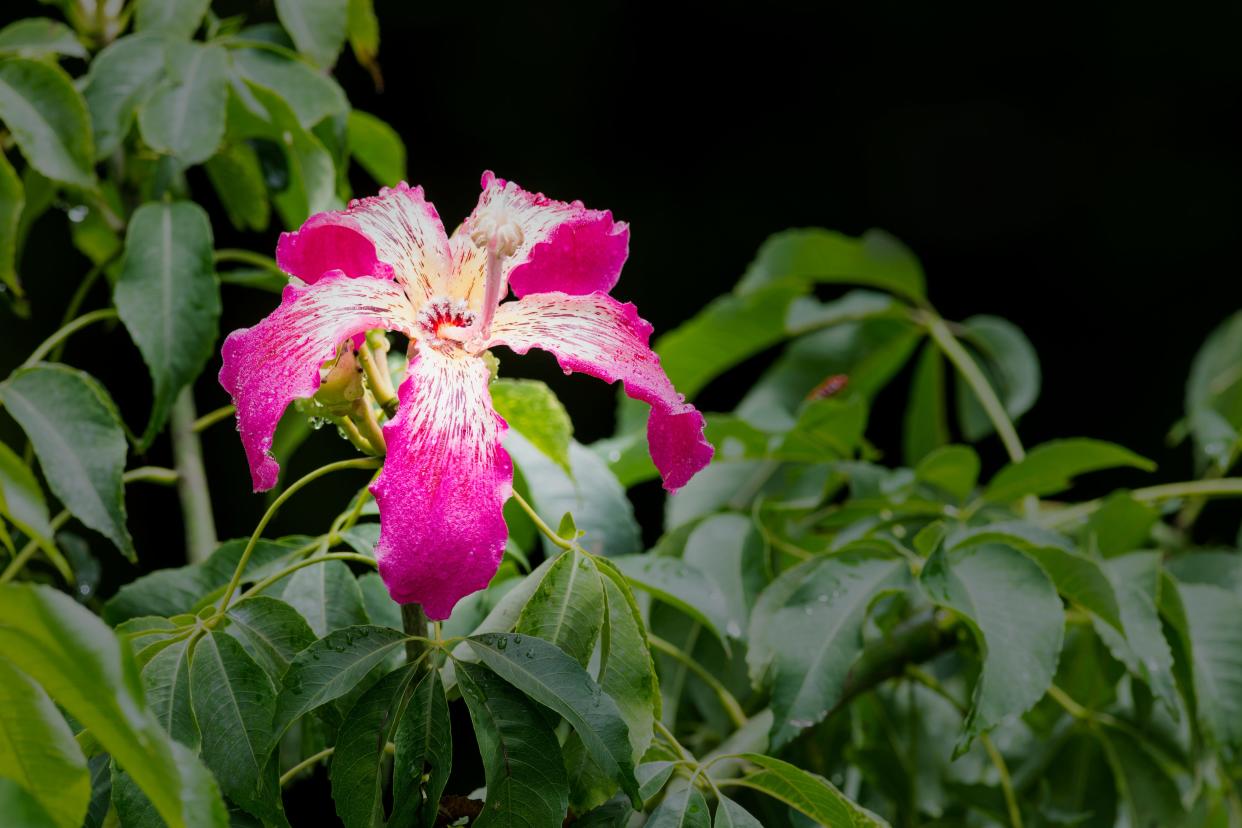Weekend plantings: Floss silk flaunts cool-season blooms and grows well in Florida

Curious gardeners want to know: Is that wondrous tree from Brazil called silk floss – or floss silk?
Well, floss silk is preferred, and it’s easy to remember because F comes before S in the alphabet. Or you could just call it by its other name – chorisia tree.
What makes this 35- to 50-foot, deciduous species (Ceiba speciosa) so outstanding are its green trunk and limbs studded with large, silver-gray, conical thorns. And for gardeners hopelessly inept at plant propagation, this distinctive tree can be grown simply by sticking cuttings – even quite large limbs – directly into moist sites.
Now for those spectacular flowers: They’re large, eye-catching blooms that range from light to dark pink and are on display from early autumn into winter. They’re followed by woody capsules (fruit) filled with seeds and floss.
Young floss silk trees – which grow rapidly in warm areas of Central Florida – should be installed in sunny locations and encouraged by occasional fertilization, as well as routine irrigation, until they’re established. Mature trees are drought tolerant.
The species, which proved sturdy during Hurricane Ian, makes an excellent shade tree thanks to its spreading canopy. Plants are available online.
They just can't handle the cold:Sapodillas are beautiful, low maintenance with tasty fruit
Yeah, they grow here:Olive trees for your Central Florida landscape
Giants of the garden:Plants for gardeners who think big
Air plants on your trees
A surprisingly large number of plants never touch the ground, spending their lives perched on limbs of large shrubs and trees. Among kinds adapted to this arboreal existence are many orchids, bromeliads and ferns. These plants are wholly non-parasitic: Their roots serve only as anchors and don’t tap into the host tree’s moisture and nutrients. The only widespread instance of an air plant being troublesome on ornamentals is when Spanish moss over-colonizes crape myrtles, reducing the light they need.
Our most common air plants are Spanish moss, ball moss and resurrection fern. One tree dweller, however, isn’t an air plant: Mistletoe, which is parasitic, is most easily observed this time of year, when some trees are completely or partially leafless. If you can reach mistletoe growth safely, consider breaking it off tree limbs. It will grow back eventually, but you’ll have reduced the toll it takes on the hosts. Note: mistletoe fruit – the white ‘’berries’’ – are toxic.
Delayed reaction to hurricanes
Months after tropical storms ravage our area, homeowners often report the decline of trees that had seemed to ride out the storm. Pines especially tend to react badly to buffeting by hurricane-force winds, often dying well after the event.
A classy Clerodendrum
In their book ‘’Your Florida Guide to Perennials,’’ authors Brown and Schoellhorn describe nodding clerodendrum as "the classiest of the Clerodendrums" because of its butterfly-shaped blossoms and graceful branching. They’re right.
This Southeast Asian, cold-hardy species (C. wallichii) grows six feet tall in bright, filtered light, boasting arching stems of white, winged flowers in late autumn and early winter. Nodding clerodendrum has a pleasing, spreading growth habit and is renowned for its pest resistance. Cease pruning by mid-July to avoid removing developing flowerbuds.
This article originally appeared on The Ledger: Chorisia trees bloom in the cool season and are easy to grow in Florida

